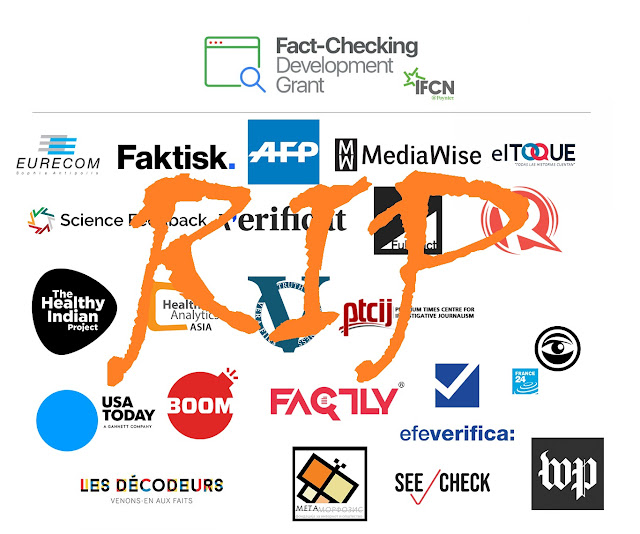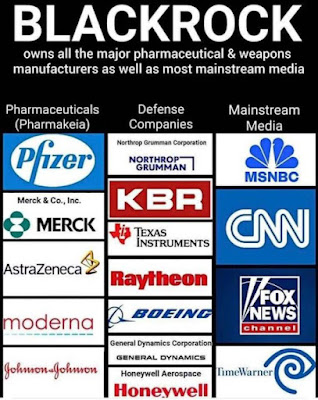More than 200 news sites as partners, The Trust Project continues to champion news transparency and accuracy. Translation = we will manipulate the truth to fit our business objectives and narrative.
The Coronavirus Fact-Checking Grants will support 13 projects on its 1st round: More than half a million dollars is being distributed. The Fact-Checking Development Grant has awarded 22 projects in 12 countries. Meet the grant winners below . . .
When and what started this Trusted News initiative and the Fact-Checking sites? The alleged Russian election interference.
As the late Paul Harvey once said, "Now You Know The Rest Of The Story . . . Good Day!"
Engagement with news content plummeted last year compared to 2020, and given the ongoing decline in interest in news about COVID-19 and politics, it doesn't look like 2022 will be much better.
Why it matters: The Trump era and the onset of the COVID-19 pandemic created a one-of-a-kind media moment that will be hard for news companies to replicate.
With fewer singular storylines capturing America's collective attention, news consumption was more scattered and diverted to sports.
Data shows that the Omicron variant is not jumpstarting Americans' engagement in COVID news like it did at the onset of the pandemic.
By the numbers: Primetime news viewership was down 36% across the three major cable networks, Fox News, CNN and MSNBC, with the steepest decline during that time frame happening at CNN, per Nielsen ratings.
Broadcast viewership was also down for broadcast networks' evening news shows, but the declines weren't as drastic, the Associated Press notes.
App downloads for the top 12 mainstream publishers dropped 33%, according to data from Apptopia. Downloads to news apps fell most dramatically during the second half of the year.
Engagement on social media with news articles nosedived, according to data from NewsWhip. Interactions (likes, comments, shares) dropped 65% between 2020 and 2021, despite more articles published.
Website visits for the top-performing news websites in the U.S. tracked by Similarweb in the first 11 months of 2021 dropped 8%.
Yes, but: As Axios has previously noted, traffic to hyper-partisan and political publishers took a severe hit in 2021, while mainstream news publishers did better.
Be smart: The full-year drop in news engagement would have been even more dramatic were it not for the enormous amount of news traffic driven by the Capitol siege in January.
The Capitol riots drove a massive global traffic spike in January 2021, according to Bonnie Ray, the head of data science at traffic analytics company Chartbeat.
Overall, Chartbeat found that amongst 4000+ publishers globally, traffic declined 8% between 2020 and 2021, but when comparing overall traffic for December 2021 to January 2021, it's down nearly 20%.
What to watch: A few landmark events — like the Beijing Winter Olympics and the 2022 midterm elections — could provide some much-needed traffic boosts for publishers looking to hold on to fleeting subscribers.
But even those big events, in addition to tentpoles like Hollywood award shows, the Super Bowl and other sports championships, look poised to sustain TV viewership declines as Americans migrate to streaming.














